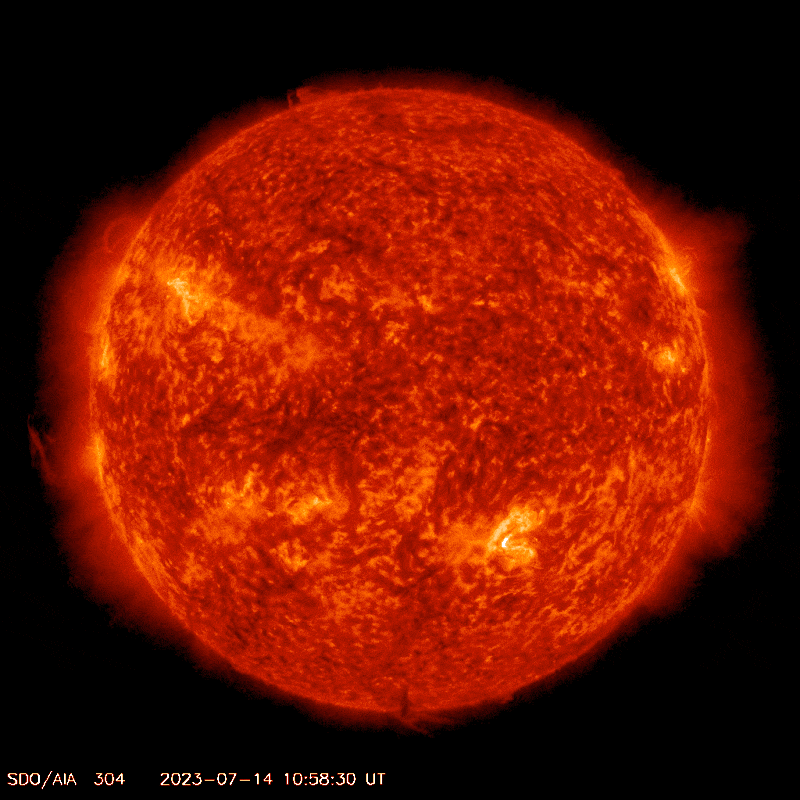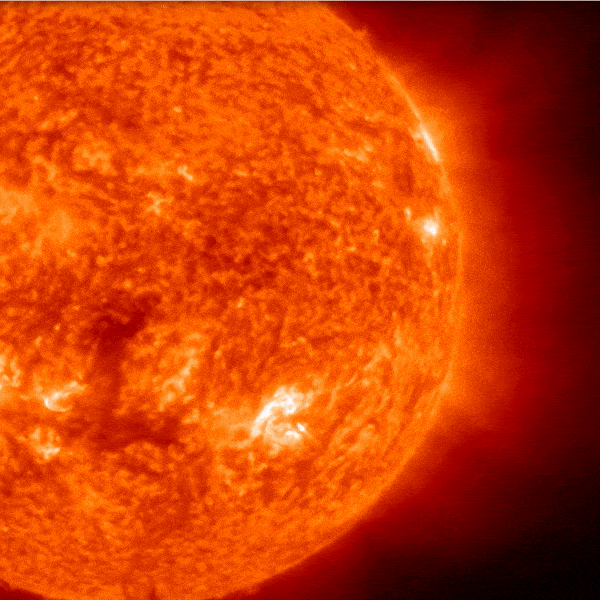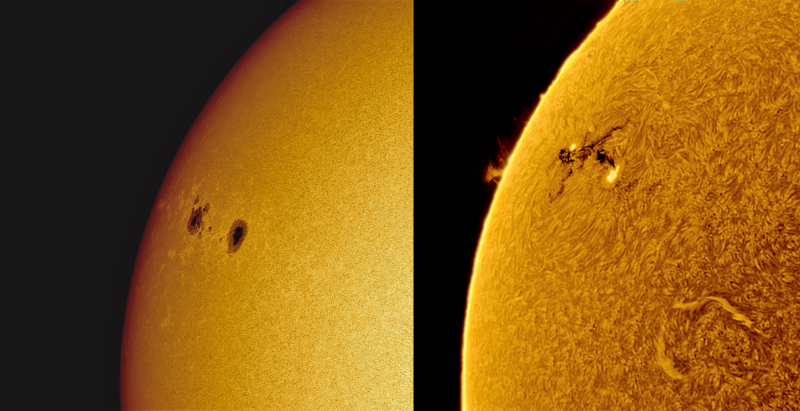

Today’s top news: AR3370 has grabbed our
attention, launching a dark filament that fanned out
across the solar disk. The region had been rather inactive until
it released a C8.8 flare around 18:30 UTC on July 14. This
was immediately followed by the dark filament eruption from the
eastern side of the region. This created a dark spray that fanned
out toward the west. The spray was dark because the filament
material was much cooler than the surrounding material. The
resulting coronal mass ejection (CME) likely has an
Earth-directed component, but we await further analysis. We also
saw a Type II radio burst from an
M2.2 flare by AR3372, which is indicative of a CME. This event may
also have an Earthward component, and analysis is ongoing. Stay
tuned!
Last 24 hours: Sun activity is moderate,
with an M2.9 flare from AR3363 along
with an M1.1 and an M2.2 back-to-back from AR3372. The sun also
produced 19 C flares between 11 UTC
yesterday and 11 UTC today. The M2.9, which was fired at 7:21 UTC on July 15, caused
an R1 (minor) radio blackout over southeast
Asia and the Indian Ocean. AR3363 was the day’s leading flare
producer, with the M2.9 and ten Cs. The sun currently has eight
labeled active regions on its Earth-facing side.
Next 24 hours: The forecast is a 99% chance for C
flares, a 50% chance for M flares, and a 10% chance for X flares.
Next expected CME: No Earth-directed coronal
mass ejections (CMEs) were confirmed in
available imagery, but two events are under analysis.
Current geomagnetic activity: Earth’s magnetic
field is quiet as of 11 UTC on July 15.
Intermittent G1 (minor) geomagnetic storming is
likely today due to CME effects and fast solar wind from a coronal hole. These effects
should weaken on July 16, with only isolated active periods. Quiet
conditions are then expected on July 17, pending the modeling
results from July 14 CME events.


